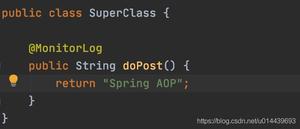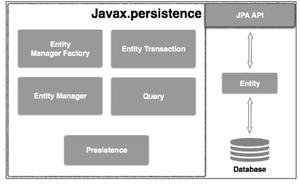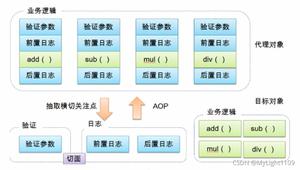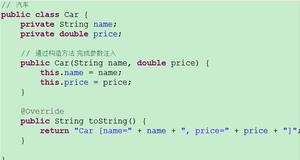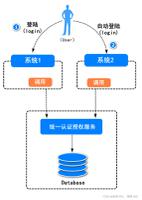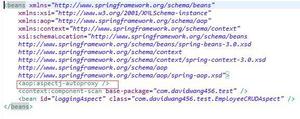[译]14-spring 集合元素的注入
本文内容纲要:[译]14-spring 集合元素的注入
前面的文章已经介绍了如何往bean里面注入原始类型和引用类型.我们使用bean元素的contructor-arg或property子
元素的value属性注入java原始类型;同理,我们可以使用bean元素的contructor-arg或property子元素的ref属性注入
java的引用类型.
但是至此为止,我们讲到的时候单个对象或原始值的注入.本节我们来讲解如何往bean中注入集合对象.spring中bean
元素的property和contructor-arg子元素可以包含以下四个子元素,用于集合类型的注入
| 元素 | 描述 |
| <list> | 用于注入List,允许有重复数据 |
| <set> | 用于注入set,不允许有重复数据 |
| <map> | 用于注入map映射 |
| <props> | 用于注入java Properties |
上述四个元素既可以用来注入原始类型也可以用来注入引用类型.
这节内容其实很简单,下面直接上个例子.仔细看一遍例子程序,就能完全掌握集合元素的注入了.
1.创建包com.tutorialspoint.collection,并在包中新建InjectCollection.java、Hobby.java、Person.java,内容如下
InjectCollection.java如下:
package com.tutorialspoint.collection;import java.util.List;
import java.util.Map;
import java.util.Properties;
import java.util.Set;
@SuppressWarnings("all")
public class InjectCollection {
//用于演示包含原始数据的List的注入
private List<String> list_hobby_pri;
//用于演示包含引用类型的List的注入
private List<Hobby> list_hobby_ref;
//用于演示包含原始数据的Set的注入
private Set<String> set_hobby_pri;
//用于演示包含引用类型的Set的注入
private Set<Hobby> set_hobby_ref;
//用于演示包含原始数据的Map的注入
private Map<String,String> map_hobby_pri;
//用于演示包含引用数据的Map的注入
private Map<Person,Hobby> map_hobby_ref;
//用于演示property的注入
private Properties prop_hobby;
public void setList_hobby_pri(List<String> list_hobby_pri) {
this.list_hobby_pri = list_hobby_pri;
}
public void setList_hobby_ref(List<Hobby> list_hobby_ref) {
this.list_hobby_ref = list_hobby_ref;
}
public void setSet_hobby_pri(Set<String> set_hobby_pri) {
this.set_hobby_pri = set_hobby_pri;
}
public void setSet_hobby_ref(Set<Hobby> set_hobby_ref) {
this.set_hobby_ref = set_hobby_ref;
}
public void setMap_hobby_pri(Map<String, String> map_hobby_pri) {
this.map_hobby_pri = map_hobby_pri;
}
public void setMap_hobby_ref(Map<Person, Hobby> map_hobby_ref) {
this.map_hobby_ref = map_hobby_ref;
}
public void setProp_hobby(Properties prop_hobby) {
this.prop_hobby = prop_hobby;
}
public void print(){
System.out.println("list_hobby_pri: "+list_hobby_pri);
System.out.println("list_hobby_ref: "+list_hobby_ref);
System.out.println("set_hobby_pri: "+set_hobby_pri);
System.out.println("set_hobby_ref: "+set_hobby_ref);
System.out.println("map_hobby_pri: "+map_hobby_pri);
System.out.println("map_hobby_ref: "+map_hobby_ref);
System.out.println("prop_hobby: "+prop_hobby);
}
}
Hobby.java如下:
package com.tutorialspoint.collection;public class Hobby {
}
Person.java 如下:
package com.tutorialspoint.collection;public class Person {
}
2.在src目录下新建di_collection.xml文件,内容如下:
<?xml version="1.0" encoding="UTF-8"?><beans xmlns="http://www.springframework.org/schema/beans"
xmlns:xsi="http://www.w3.org/2001/XMLSchema-instance"
xsi:schemaLocation="http://www.springframework.org/schema/beans
http://www.springframework.org/schema/beans/spring-beans-3.0.xsd">
<!-- 定义三个Hobby实例 -->
<bean id="hobby1" class="com.tutorialspoint.collection.Hobby"></bean>
<bean id="hobby2" class="com.tutorialspoint.collection.Hobby"></bean>
<bean id="hobby3" class="com.tutorialspoint.collection.Hobby"></bean>
<!-- 定义三个Person实例 -->
<bean id="person1" class="com.tutorialspoint.collection.Person"></bean>
<bean id="person2" class="com.tutorialspoint.collection.Person"></bean>
<bean id="person3" class="com.tutorialspoint.collection.Person"></bean>
<!-- 下面示例了使用内部bean的方式注入spellChecker依赖项 -->
<bean id="injectCollection" class="com.tutorialspoint.collection.InjectCollection">
<!-- 包含原始类型List元素的注入 使用list元素的value子元素即可 -->
<property name="list_hobby_pri">
<list>
<value>basketball_list</value>
<value>reading_list</value>
<value>surfing_list</value>
</list>
</property>
<!-- 包含引用类型的List元素的注入使用list元素的ref子元素即可 -->
<property name="list_hobby_ref">
<list>
<ref bean="hobby1"/>
<ref bean="hobby2"/>
<ref bean="hobby3"/>
</list>
</property>
<!-- 包含原始类型的Set元素的注入使用set元素的value子元素即可 -->
<property name="set_hobby_pri">
<set>
<value>basketball_set</value>
<value>reading_set</value>
<value>surfing_set</value>
</set>
</property>
<!-- 包含引用类型的Set元素的注入使用set元素的ref子元素即可 -->
<property name="set_hobby_ref">
<set>
<ref bean="hobby1"/>
<ref bean="hobby2"/>
<ref bean="hobby3"/>
</set>
</property>
<!-- 包含原始类型的Map元素的注入使用map元素的entry子元素的key和value属性即可 -->
<property name="map_hobby_pri">
<map>
<entry key="person1_map" value="hobby1_map"></entry>
<entry key="person2_map" value="hobby2_map"></entry>
<entry key="person3_map" value="hobby3_map"></entry>
</map>
</property>
<!-- 包含引用类型的Map元素的注入使用map元素的entry子元素的key-ref和value-ref属性即可 -->
<property name="map_hobby_ref">
<map>
<entry key-ref="person1" value-ref="hobby1"></entry>
<entry key-ref="person2" value-ref="hobby2"></entry>
<entry key-ref="person3" value-ref="hobby3"></entry>
</map>
</property>
<!-- properties元素的注入 -->
<property name="prop_hobby">
<props>
<prop key="person1_prop">hobby1_prop</prop>
<prop key="person2_prop">hobby2_prop</prop>
<prop key="person3_prop">hobby3_prop</prop>
</props>
</property>
</bean>
</beans>
3.在包com.tutorialspoint.collection中新建MainApp.java,内容如下:
package com.tutorialspoint.collection;import org.springframework.context.ApplicationContext;
import org.springframework.context.support.ClassPathXmlApplicationContext;
public class MainApp {
public static void main(String[] args) {
ApplicationContext context=new ClassPathXmlApplicationContext("di_collection.xml");
InjectCollection ic = (InjectCollection)context.getBean("injectCollection");
ic.print();
}
}
4.运行程序,检查结果.
本文内容总结:[译]14-spring 集合元素的注入
原文链接:https://www.cnblogs.com/sysman/p/4481929.html
以上是 [译]14-spring 集合元素的注入 的全部内容, 来源链接: utcz.com/z/296011.html


